On Saturday 3 May, we woke up at Amman.
The programme included Christ's Baptism site in Wadi al Kharar - Bethany beyond the Jordan, where John the Baptist lived and baptized. The Bethany area sites formed part of the early Christian pilgrimage route between Jerusalem, the Jordan River, and Mount Nebo. The area is also associated with the biblical account of the Prophet Elijah ascended to heaven in a whirlwind on a chariot of fire (2 Kings 2:11).
A path, with tamarisk thin trees on dry whitish land on both sides, next to another path, recently made of concrete [ready to accommodate the passage of the pope-mobile with Pope Francis who was to visit later on in May] lead to a wooden shed built next to a small pool with green murky water and four large foundation blocks [built of layers of stone] on its sides, leaving in between the space for the cross-shaped pool. This is held as the place where Jesus was baptized, and signs in different languages, fixed to the two walls of the 'L'-shaped shed, explain this for visitors.
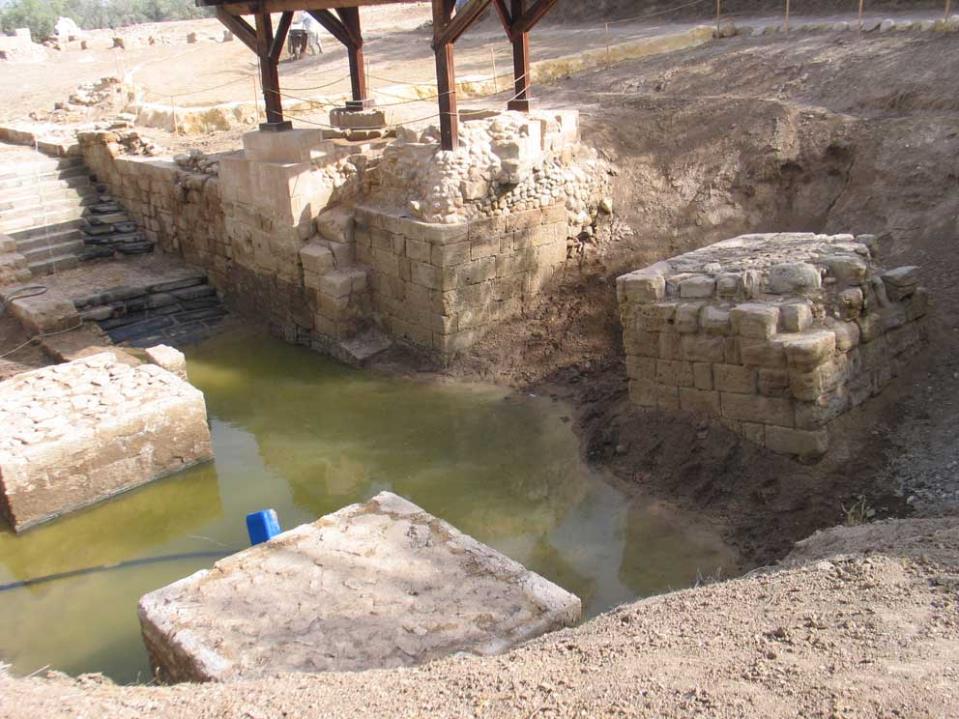
Then we walked down to a another quite larger wooden shelter with wooden steps beneath it, on the bank of the River Jordan where the width is not larger than a few meters, and we could see people on the other side, just beneath a building with a flag of Israel flying above it. Here, on these steps, members of our group began to kneel down and dip their hands in the river water. Fr Anthony, who had gone down on the last step - that next to the water - had a small plastic bottle filled with water from the river. Then he read a selection from the Gospels which dealt with the Baptism of Christ (Matthew 3:13-17; Mark 1:9-11; Luke 3:21,22), and we renewed our Baptismal Vows. Each of us approached Fr Anthony who 'baptized' us, one by one.
Afterwards, we visited St John the Baptist Church which is just a few meters away, and is referred to as the church on the River Jordan. Its walls are covered with colourful paintings depicting Biblical scenes, especially of the Passion of Our Lord.
Later we drove and crossed back to Israel. On the way we observed several spots with clusters of Bedouin tents.
We passed over the Allenby Bridge [also known as the King Hussein Bridge; Arabic: Jisr al-Malek Hussein]. This is a bridge that crosses the Jordan River, and connects the West Bank with Jordan. It has a long story. It was destroyed once in the 'Night of the bridges' operation on 16 June 1946 and again during the Six-Day War which took place between 5 and 10 June 1967.
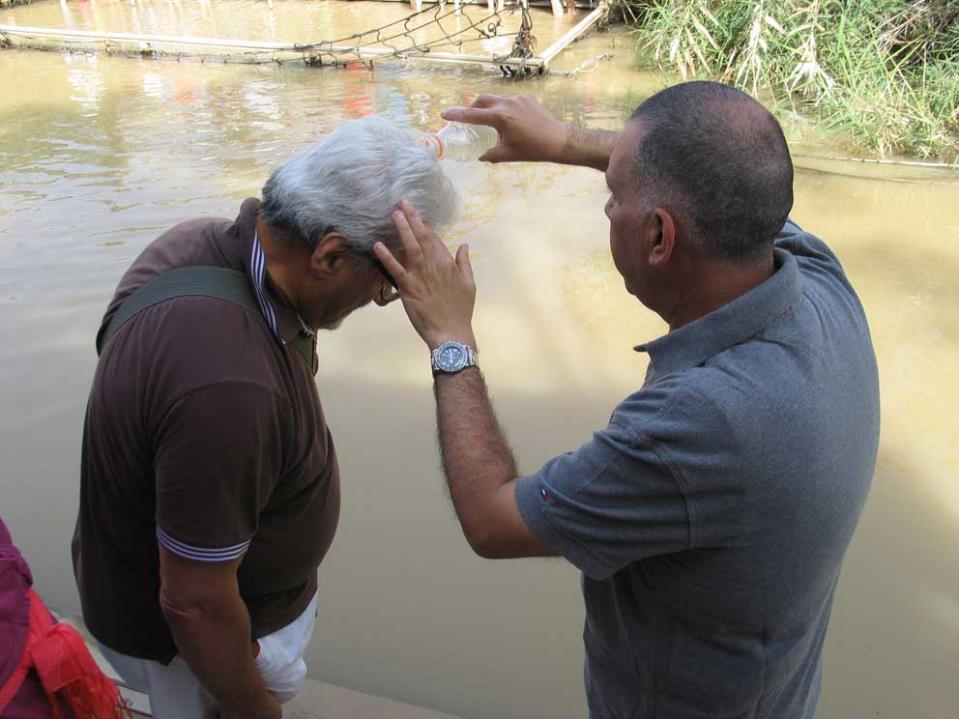
It took us just over an hour to pass through the border and drive to Jerico where Fr Anthony showed us the school the Franciscan fathers built. On the way we passed by a large sycamore tree - one like that on which Zacchaeus climbed so that he might be able to see Jesus (Luke 19:4). Here Fr Anthony and Mgr Bezzina concelebrated Holy Mass in the Good Shepherd church attached to the school.
The foolowing day, Sunday, we left Jerico by coach to the Masada Fortress, one of Israel's most popular tourist attractions.
It was quite a long drive, along the road on the shores of the Dead Sea on our left, and the desert mountain slopes with large rock blocks and boulders threatening to fall down and block our road, on our right.
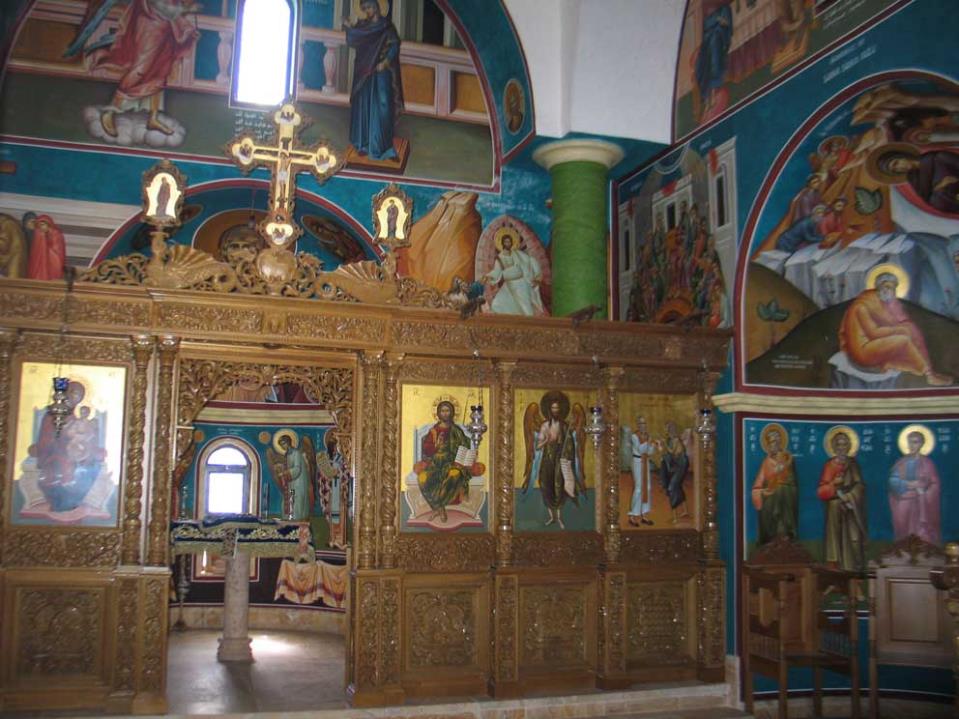
At Masada we alighted a cable-car to take us on top of the plateau. Soon enough we were launched into the sky above the Negev Desert. On the way up, we could see some people, challenging the desert land and climate, trudging their way to the top, on narrow paths, sometimes with a railing protecting against the danger of slipping the downs of the mount down to the barren, desert land below. [Masada is an ancient fortification in the Southern District of Israel, situated on top of an isolated rock plateau overlooking the Dead Sea. In Roman times Herod the Great built palaces for himself on the mountain and fortified Masada. It is recorded that the Siege of Masada by troops of the Roman Empire towards the end of the First Jewish-Roman War ended in the mass suicide of the 960 Jewish rebels and their families who were hiding there.]
Up on the top - after no longer than a five-minute trip, with breath taking views of the desert slopes and beyond this mount - we gathered under the shade of a tree beside a water tap for the convenience of the hundreds (if not thousands) of tourists who visit this place. Fr Anthony talked about the history of the city and Palaces that were built during the first century BC. Of those constructions we saw remains of ritual baths, foundations of store rooms, ruins of a Byzantine church, reservoirs, and cisterns.
The temperature up here was phenomenally high - truly representative of the desert where the fortress is found. The cracked and fragmented clayish stone of the terrain are the result of these high unbearable temperatures especially during the day, and one wonders if the numerous baths that once flourished when the city was 'alive' were in fact ritual or rather places where the citizens could refresh themselves with a dip at leisure in the unbearable temperatures during most of the months of the year.
An interesting attraction on a promontory of the plateau is the Columbarium Tower ['dovecot'].
We had a quick tour of the foundation remains frequently accompanied by crows and Tristam's Starlings [or Tristram's Grackle (Onychognathus tristramii) named after Rev Henry Baker Tristram]. These would stop with open beaks awaiting to be offered something to eat.
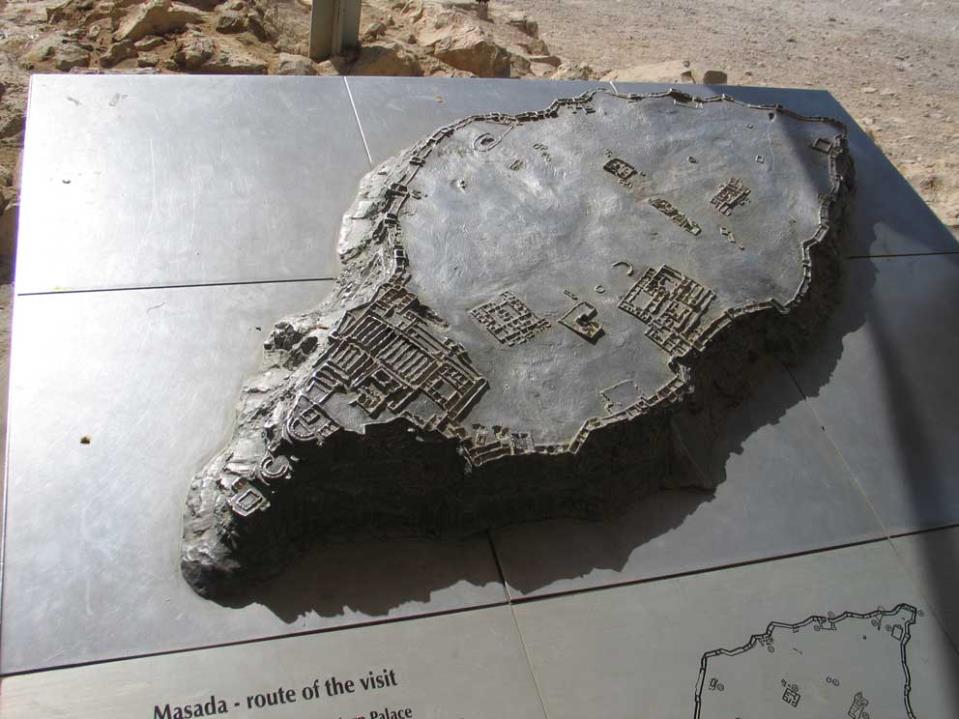
The Dead Sea Scrolls
After Masada we journeyed to Qumran, passing by Ein Gedi and the Qumran Caves. [Ein Gedi is composed of two Hebrew words: ein 'spring' and gedi 'goat-kid'. Thus Ein Gedi means 'Kid Spring', in Maltese 'għajn' + 'gidi'.]
At Qumran we walked into a shaded area where we were shown a DVD about the historical find of the 'Dead Sea Scrolls' - a collection of 981 ancient Jewish religious, mostly Hebrew, manuscript texts, dating back to between 408 BC and 318 AD. These were discovered inside caves about a mile inland from the northwest shore of the Dead Sea, between 1946 and 1956. Excavations were conducted by Roland de Vaux. Souvenirs sold here included a scroll together with a booklet giving the history of the discovery, and a small pottery jar like the ones in which the scrolls were found.
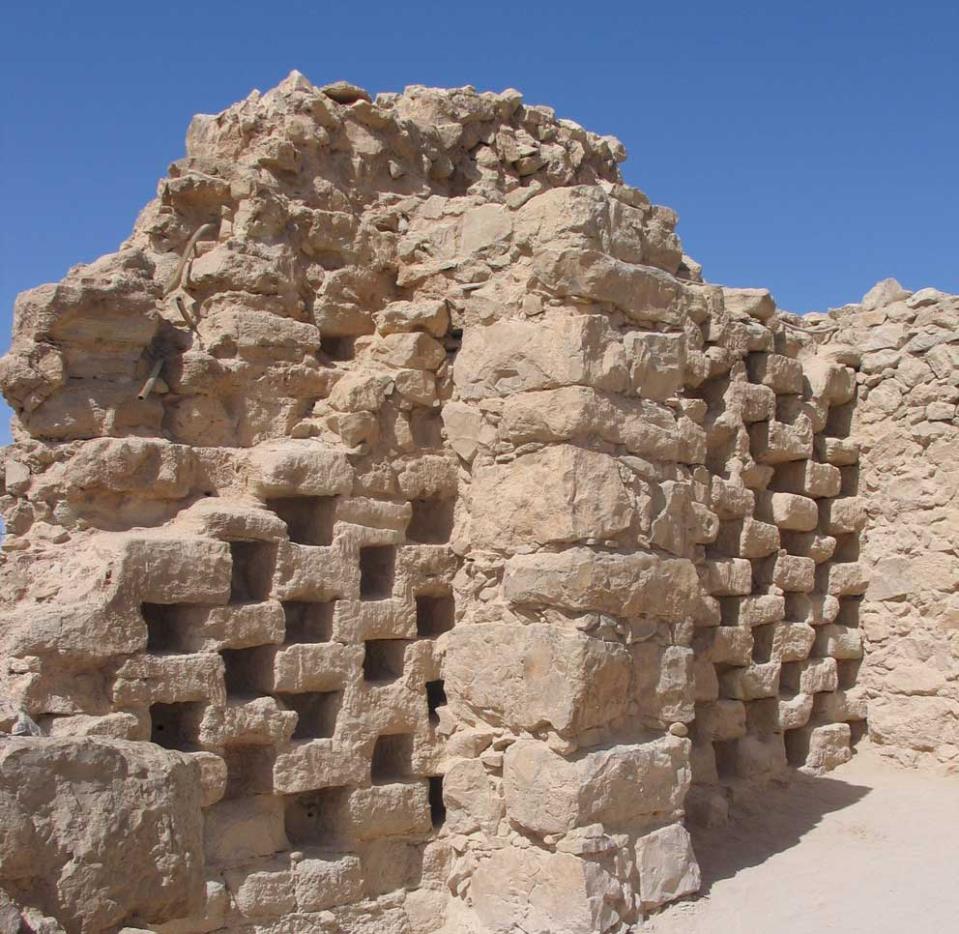
From here we were taken to a restaurant at Kalia Beach on the shore of the turquoise waters of the Dead Sea [Hebrew: Yām HaMéla, 'Sea of Salt', Arabic al-Bahr al-Mayyit (Maltese: 'Il-Baħar il-Mejjet), also called the Salt Sea]. It is a salt lake - the lowest point of dry land on earth - with its surface and shores 427 metres below sea level. It is 306 metres deep and ... one of the world's saltiest bodies of water, because of which no creature can live in it, hence its name.
Here we had lunch which included fish.
Some of us decided to feel the experience of 'floating' on the surface of the water - because of the high content of salt, it is practically impossible to swim.
Afterwards, we drove towards Ein Gedi on to Bethany where we heard Mass in the church built next to the tomb of Lazarus.
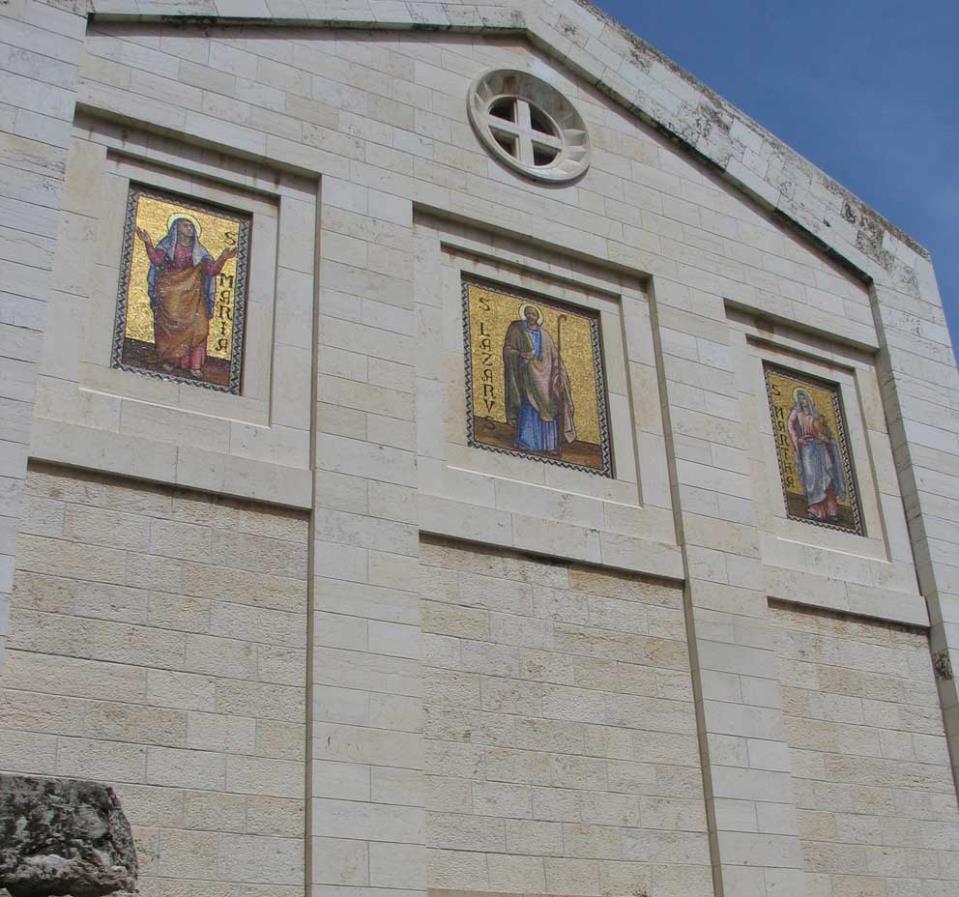
Bethany [Arabic: al-Azariyya] is a Muslim and Christian Arab village on the south eastern slopes of the Mount of Olives, in Jerusalem. Bethany was the home of the family of Lazarus, Mary, and Martha and the setting for a number of New Testament events. The Tomb of Lazarus in Bethany has long been venerated by Christians and Muslims alike, and the modern church dedicated to the resurrected St Lazarus, stands on the site of much older ones.
Later, in the evening, we were taken to Bethlehem.
All photos accompanying this article were taken by the author
© Joe Zammit Ciantar
[email protected]
Part 1
Part 2
Part 3